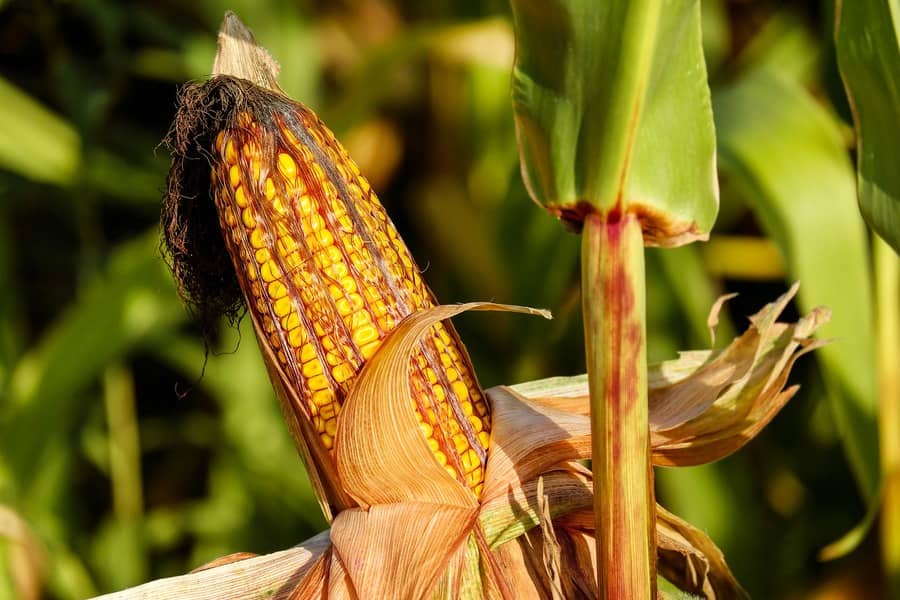Porto Alegre, January 24, 2022 – Completion of the harvest in the Missões region in Rio Grande do Sul already on January 20. This is information is not surprising considering what has happened with the local crop this year. Besides, signs of total crop losses in higher regions on the border with Santa Catarina are surprising because it is exactly where the rains came in larger volumes.
This is reflected in a worrying scenario for corn in the Brazilian market. We cannot imagine that the solution will come with a local supply and that this will not affect markets in other states. In January, there was a strong buying action on the part of the southern region of Mato Grosso and Goiás. This situation should be accentuated in other regions of the country in February and March, also because it will be very difficult to import corn at least until May. The exchange rate only brings that psychological feeling to the internal effect on prices.
However, we will not have new exports until June, so the effect is null. It seems that it will still be difficult to import from Argentina, at FOB prices, and perhaps only after May. In the short term, there is no practical effect for the domestic market. The attention now turns to the second crop progress.
Alternatives for supply. This issue summarizes renewed problems for corn supply until the beginning of Brazil’s 2022 second crop. At this point, some variables need to be considered:
– The harvest of the summer crop in the South region should still show worse numbers. The summer crop in the Southeast and Midwest is not enough to compensate for historic losses in the South region;
– Carryover stocks are the lowest since 2012. It is a mistake to use figures that point to stocks above 10 million tons in Brazil. This kind of evaluation error has been seen in the past, and the result was supply chaos;
– Demand will rise to the Midwest and Southeast in the search for supplies, considering that corn imports are currently unfeasible. Therefore, to believe that the supply situation will be restricted to the South of Brazil is really naive;
– There are no exports between February and June, therefore, the washout option does not exist as a supply alternative;
– Despite the good appreciation of the real in January, imports are still very expensive. Prices in Argentina jumped above USD 270/ton FOB, which represents prices in Brazilian ports above BRL 105/bag even with the dollar at BRL 5.40, in a drawback regime and still with the cost of internalization of corn having to be added. Some renewal of the government’s decision to withdraw import tariffs in the first semester basically does not change the high import cost already calculated without taxes;
– Demand will not change in the first half of the year. News on the cut of matrices will not change the trajectory of corn supply in the period.
– The sector did not take advantage of the corn oversupply in October and November last year to lengthen stocks. On the contrary, it chose to give priority to lowering prices and not guaranteeing future supply. Exports absorbed all the surpluses, and now we only have the discreet summer crop in the Center-South of 21.5 million tons plus 3 million tons in carryover stocks to meet demand until the beginning of the 2022 second corn crop. There is no demand decline in the first half to compensate for this situation;
– The 2022 second crop has started to be planted. A great window for the start of planting, which must advance rapidly in February. With this curve, we must assess that second-crop corn will start to appear in the market from the end of June and improve in July. This is an important difference from 2021, when the second crop was planted 30 days later than normal.
– If the advance of planting is an important point to determine the longevity of the 2022 off-season, the climate is a factor of great attention. The first crops are being planted in the extreme west of Paraná, southern Mato Grosso do Sul, and Paraguay. The crops were planted in places that received rain this January. Therefore, planting is still initial and slow, many producers do not want to risk planting without a more evident climate condition. Soil moisture is far from being corrected to ensure optimal development of the initial second crop. In short, rains should be very good in February;
– In Mato Grosso, the second-crop planting advances as of this week in a great planting window and with great production potential. Other second-crop corn regions in other states should advance in February to the rhythm of the soybean harvest since planting conditions are normal.
Given these indicators, the domestic market will have to position itself for supply until June. There is no second-crop harvest in May, but only the harvest in Minas Gerais and Goiás at this time of year. In order to meet demand, would it be more affordable for the South region to boost purchases in these states than to import? Probably. In this interval, monitoring the climate in the second crop will be essential. However, due to the good planting window, weather risks become lower in the face of a frost in June, for example. In summary, from February to April, the rains need to advance in good condition to guarantee a record second corn crop in 2022.
Agência SAFRAS Latam
Copyright 2022 – Grupo CMA

